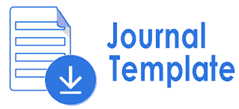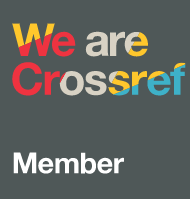THE CORRELATION BETWEEN STUDENTS’ ANXIETY AND STUDENTS’ ACHIEVEMENT IN LEARNING ENGLISH
Abstract
The objective of the study was to find out the correlation between students’ anxiety and students’ achievement in learning English. The research design was correlational research which consisted of two variables, independent and dependent variable. The sampling technique was probability sampling with cluster random sampling. The sample in this research was thirty nine students of X8 social class of SMAN 08 Batam. Foreign Language Classroom Anxiety Scale (FLCAS) by Horwitz was addressed to check the existence of students’ anxiety. The instrument to measure the students’ achievement was a diagnostic test which consists of listening and reading comprehension test. After tested the validity and reliability of the test by using SPSS V.16.0, the researcher distributed the test to the sample. Then, the researcher analysed the correlation by using Product Moment Formula by Pearson to correlate both students’ anxiety (X variable) and students’ achievement (Y variable). The result showed that the r count or Pearson correlation was 0.092. The r table for 39 respondents is 0.312. It means that r count is lower than r table and Ha is rejected and Ho is accepted. The r count showed -0.092. Hence, there was significant negative correlation between Students’ Anxiety and Students’ Achievement in learning English at the tenth grade students of Senior High School 08 Batam.
Full Text:
PDFReferences
Brown, H. Douglas. (2004). Language Assessment: Principle and Classroom Practices. ISBN 0-13-098834-0. Retrieved from https://books.google.co.id/books/about/Language_Assessment.html?id=NqglAQAAIAAJ&redir_esc=y
Čiček, Lana. (2014). Language Anxiety-Causes and Consequences.Graduation Thesis.University of Zagreb. 1-49
Horwitz, Elaine K., Horwitz, Michael B., & Cope, Joann. Foreign Language Classroom Anxiety (1986). The Modern Language Journal, 70. Retrieved from http://www.jstor.org/stable/327317
Hu, Ling&Wang, Na. (2014). Anxiety in Foreign Language Learning. International Conference on Global Economy, Commerce and Service Science (GECSS). Atlantis Press. 122-124.
Minat, Numaya. (2013). An Investigation Of English Language Anxiety Experiences Of Undergraduate Students In Bangladesh (Doctoral Dissertation). Retrieved from http://hdl.handle.net/10361/3555
Mundhe, Ganesh B. (2015). Teaching Receptive And Productive Language Skill With The Help Of Techniques. An International Journal in English, 1, 1. ISSN 2454-3454
Pritchard, Alan. (2009). Ways for Learning: Learning Theories and Learning Styles in the Classroom (2nd ed.). ISBN 0-203-88724-7 Master e-book ISBN. Retrieved from www.epitropakisg.gr/grigorise/ways%20of%20learning.pdf
Sugiyono, (2010). Metode Penelitian Kuantitatif Kualitatif & RND. Bandung: Alfabeta
Suryabrata, S. (2003). Pendidikan Belajar Mengajar di Perguruan Tinggi. Yogyakarta: Andi Offset.
Wallace, Trudy, Stariha, Winifred E., & Walberg, Herbert J. (2004). Teaching speaking, listening and writing. International Academy of Education. Retrieved from http://www.ibe.unesco.org
Wu, Kun-huei. (2010). The Relationship between Language Learners’ Anxiety and Learning Strategy in the CLT Classroom. International Education Studies. Vol.3(1). 174-191.
Zeidner, Moshe. (1998). Test Anxiety the State of the Art. ISBN 0-306-47145-0. Retrieved from http://www.springer.com/gp/book/9780306457296
DOI: https://doi.org/10.33373/chypend.v5i1.1762
Refbacks
- There are currently no refbacks.
Copyright (c) 2018 Universitas Riau Kepulauan

Ciptaan disebarluaskan di bawah Lisensi Creative Commons Atribusi 4.0 Internasional.















